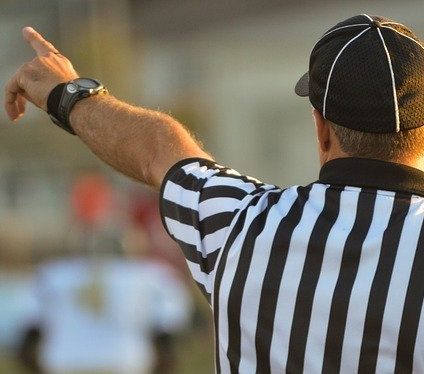A Serious End Game is Playing Out for Rogue Programmatic Traders
by Grace Dillon on 14th Apr 2021 in News

In this article written exclusively for ExchangeWire, Jonas Jaanimagi (pictured below), technology lead at IAB Australia, explains how the IAB Tech Lab will help the industry rid itself of rogue programmatic traders.
The mechanics of automated digital advertising are regularly compared to financial markets, and in some aspects that analogy can hold true. The main distinctions lie in the levels of regulation that are in place in finance and which are regularly reviewed and upgraded, whilst programmatic digital advertising remains self-regulated. This is repeatedly at the core of criticisms levelled at programmatic trading resulting in histrionic headlines about how the activities are opaque, dodgy, and crawling with mysterious ‘middle-men’ who are on the take – adding zero value in the process and merrily screwing over both the publishers and brands in the process.
In my opinion nothing could be further from the truth, regardless of what a number of recent global reports have suggested. A slew of supply-chain transparency standards (ads.txt and sellers.json) have been in place for some time now which when utilised competently can provide clarity into exactly where each impression has come from, who interacts with it en-route to a final submission into the ad exchanges. From these exchanges, plugged-in buyers can purchase as they see fit, and they now have the tools to fully interrogate the supply-chain (via the SupplyChain object) and, as a result, optimise their future supply paths. I’m yet to have seen a report into programmatic trading which uses these standards in their reconciliation and auditing efforts, which I’ve always found frustrating.
These sell-side tools are soon to be even better serviced by the IAB Tech Lab, who technically oversee both these standards and the protocols which enable all things programmatic, through a set of maintenance and validation tools to be made available within a Transparency Centre. These solutions will enable publishers and technology vendors to automate the generation, validation and updates to their ads.txt and sellers.json files and ensure that they can all be cleanly read by programmatic buyers and retrospectively audited using the SupplyChain object. Additionally, there are now recently released buy-side equivalents (buyers.json and the DemandChain object) which will provide sellers with full transparency into the equivalent buy-side plumbing and pipes. We’ll take a closer look at these in a moment, but first let’s return to that comparison with the oft-heralded financial markets and their ongoing regulatory efforts.

Jonas Jaanimagi, Technology Lead, IAB Australia
A few weeks ago, a number of banking giants, such as Goldman Sachs and Morgan Stanley, forced a rogue trader named Bill Hwang to liquidate more than USD $20bn (£14.5bn) worth of covert financial instruments which had been stealthily accumulated through highly leveraged and utterly opaque bets. A margin call occurs when the market goes against such very large and highly leveraged positions. When hit with a margin call, traders can either deposit more cash, liquidate unmargined securities, or sell the stocks. Bill couldn’t meet his margin call… and the resulting mayhem prompted Nomura and Credit Suisse to disclose that they now face potentially significant losses, to the tune of several billions, on their exposure. This is a regulated environment with trillions of dollars regularly flowing through it, and yet it’s digital advertising that is regarded as having serious problems.
As previously mentioned, the current and forthcoming standards in programmatic for our industry remain 100% optional, as we function in a self-regulatory environment, and can only function at their best when these standards are widely and competently adopted. Yet still this remains an issue. The IAB Tech Lab are confident that the new Transparency Centre which launches later this quarter will help. Additionally, work undertaken to review the option of also including a transaction ID into the declarations from DSPs will provide even greater clarity if required. The intent of this is to further enable insights into some of the pockets of activity that demand fuller interrogation to weed out fraud, malvertising and financial leakages. Whilst we hope there will be few such cases, it’s reassuring to know the tools are there if needed.
When you combine these with the recently released buy-side equivalents (still in the public commentary period) it’s difficult to understand what else can possibly be done now that full transparency has been made possible throughout both the sell and buy sides of programmatic trading. Whilst these are optional standards, if fully adopted and competently used, buyers and sellers will be able to see absolutely everything they wish. The intentions here are ultimately three-fold:
Firstly, to better support and enable both SPO and DPO and enhance the automated efficiencies for all concerned.
Secondly, transparency can stop the unhelpful dialogue regarding opacity and ‘murkiness’ - meaning that we can all have more constructive discussion related to value, creativity and, ultimately, further innovation. The majority of activity should hopefully soon not require too much monitoring, but if pockets of irresponsible rogue trading remain, then the tools required to tackle them are now fully available. However, the entire industry can only succeed if we are all willing to engage - and genuinely have the knowledge, talent and technical ability.
Thirdly, we must all combat ad fraud - which is wholly unacceptable and has to be fought on every front - and the IAB Tech Lab standards are a very solid starting point. To fully minimise risk, buyers must also understand what levels of risk they are prepared to accept, and then work with capable verification vendors, as sophisticated fraud is highly complex and very fast moving.
Meanwhile, global financial regulators are still trying to unwind Bill Hwang’s recent activities, and many of the bespoke instruments they are trying to investigate are not forced to declare those that are financially exposed to the risks. Concurrently an end game is playing out in digital programmatic advertising, as by the end of 2021 there will be a full suite of free tools available, for both buyers and sellers, and an expectation that all involved uniformly and collaboratively commit. If some participants do not, then our future as an entrepreneurial and innovative self-regulated industry remains at risk, and there can be no excuses given what is now so freely on offer. Those unwilling are either poorly advised, technically incompetent, or simply unwilling to be transparent - none of which are acceptable excuses in the modern age, and can no longer wash.
IAB Australia and IAB Tech Lab will be providing as much information on these new buy-side standards and the forthcoming IAB Tech Lab Programmatic Transparency Centre as possible, including a number of free webinars, blogs and on panels at industry events globally. For a simple introduction to, and explainer of, the recently released programmatic buy-side standards - please visit this article (https://iabaustralia.com.au/buy-side-trans-standards-update-explainer/) on our blog.
Ad TechAustraliaIndustry InfrastructureProgrammaticTransparency








Follow ExchangeWire